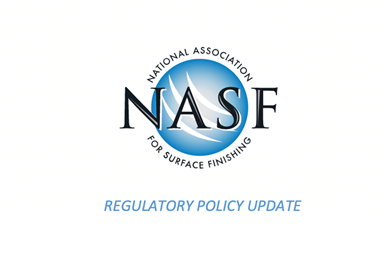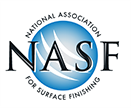OSHA Issues Emergency COVID-19 Workplace Standard for Health Care Sector
OSHA issues new federal emergency COVID-19 workplace standard for health care sector, with guidance for general industry.
#medical #regulation

OSHA's much-anticipated COVID-19 Emergency Temporary Standard (ETS) for the nation’s workplaces was formally announced June 10.
In a significant development for general industry — including surface finishing — the agency will issue only an emergency temporary standard to protect workers in the healthcare sector from contracting coronavirus.
The new emergency standard will roll out alongside a new general industry guidance, both of which are aligned with Centers for Disease Control (CDC) guidance.
The updated OSHA guidance has been issued to help employers and workers in other industries beyond healthcare protect workers who are still not vaccinated, with a special emphasis on other industries noted for prolonged close-contacts like meat processing, manufacturing, seafood, and grocery and high-volume retail.
The National Association for Surface Finishing (NASF) has continued to work closely with OSHA along with a coalition of key industries to ensure the agency and the White House remain well-informed on industry practices, COVID-19 workplace trends and the legal and practical issues associated with what would have been an unnecessary standard at this time.
NASF will be discussing the revised guidance with OSHA and allied industries in the meantime, and will share additional resources, tools and updates with members as they become available. If you have questions, please reach NASF by contacting Christian Richter at crichter@thepolicygroup.com or Jeff Hannapel at jhannapel@thepolicygroup.com.

This update is courtesy of the National Association for Surface Finishing (NASF). For more information or to become a member, visit nasf.org.
RELATED CONTENT
-
Super Finishing: ‘Micro Machining Process’ Vital To Medical Industry
Using high-precision tools and technologies that smoothes a surface—or even intentionally leaves specific controlled amounts of roughness behind—MMP is unlike any treatment on the finishing market.
-
Functional Trivalent Chromium Electroplating
This paper will discuss recent research work on the development of a functional trivalent chromium plating process from a single, simple-to-control trivalent-based electrolyte to replace hexavalent chromium plating. Hexavalent chromium plating has been used for many years to provide hard, durable coatings with excellent wear and corrosion resistance properties. However, hexavalent chromium baths have come under increasing scrutiny due to the toxic nature of the bath, effects on the environment and worker health. In this work, we are updating accomplishments to achieve properties comparable to existing hexavalent chromium plating for functional applications. Work on achieving desirable thickness, uniformity, adhesion, porosity and corrosion resistance, as well as other material properties, will be discussed.
-
Functional Trivalent Chromium Electroplating of Internal Diameters
This paper discusses recent research work on the development of a functional trivalent chromium plating process from a trivalent-based electrolyte to replace hexavalent chromium plating. Hexavalent chromium plating has been used for many years to provide hard, durable coatings with excellent wear and corrosion resistance properties. However, hexavalent chromium baths have come under increasing scrutiny due to the toxic nature of the bath, effects on the environment and workers’ health. In this paper are results from our development program aimed at achieving properties comparable to existing hexavalent chromium plating for functional applications. Specifically, recent efforts in plating chromium on the internal surfaces of cylindrical parts will be presented, as well as wear test data.















